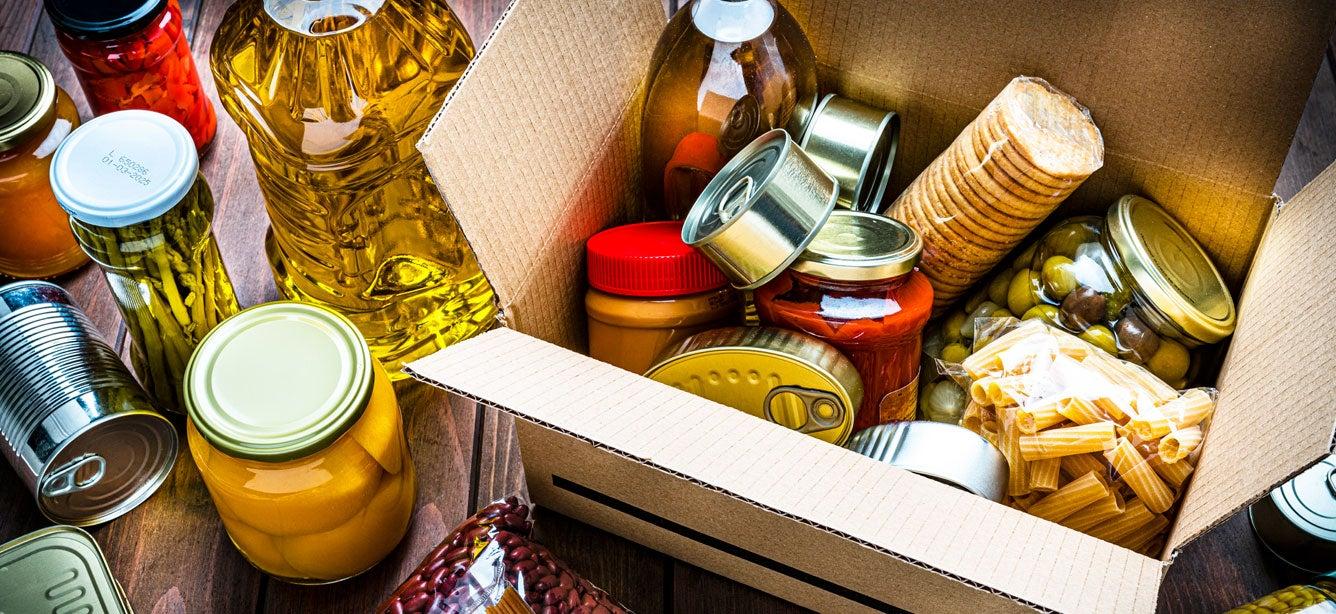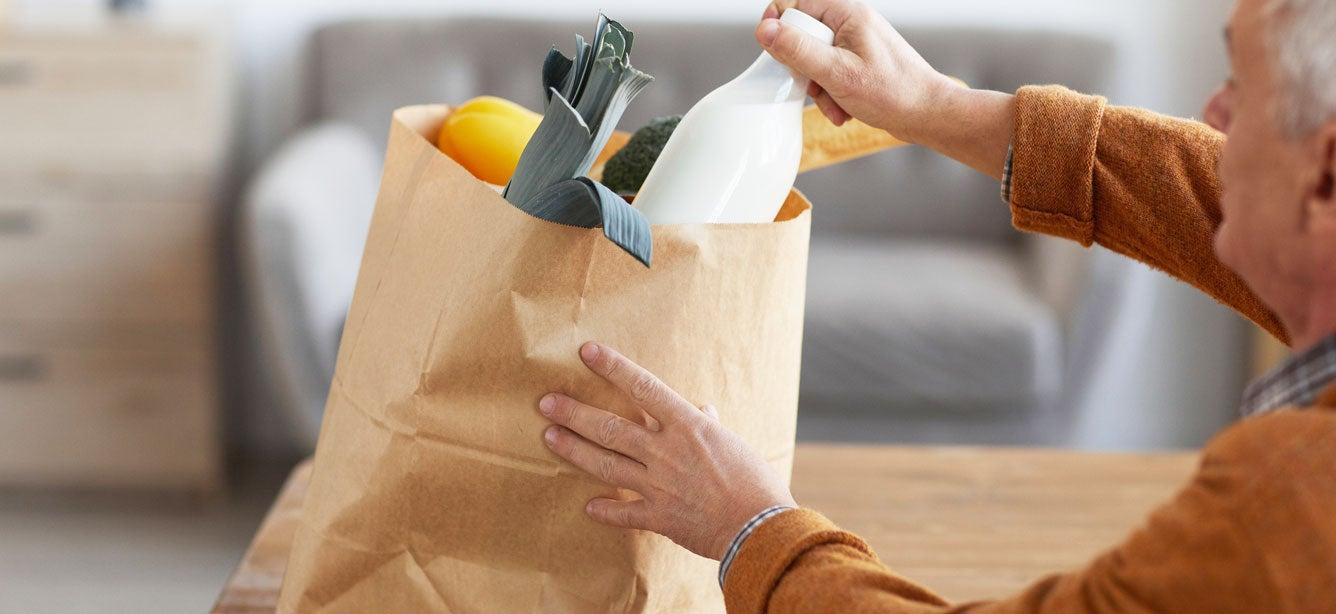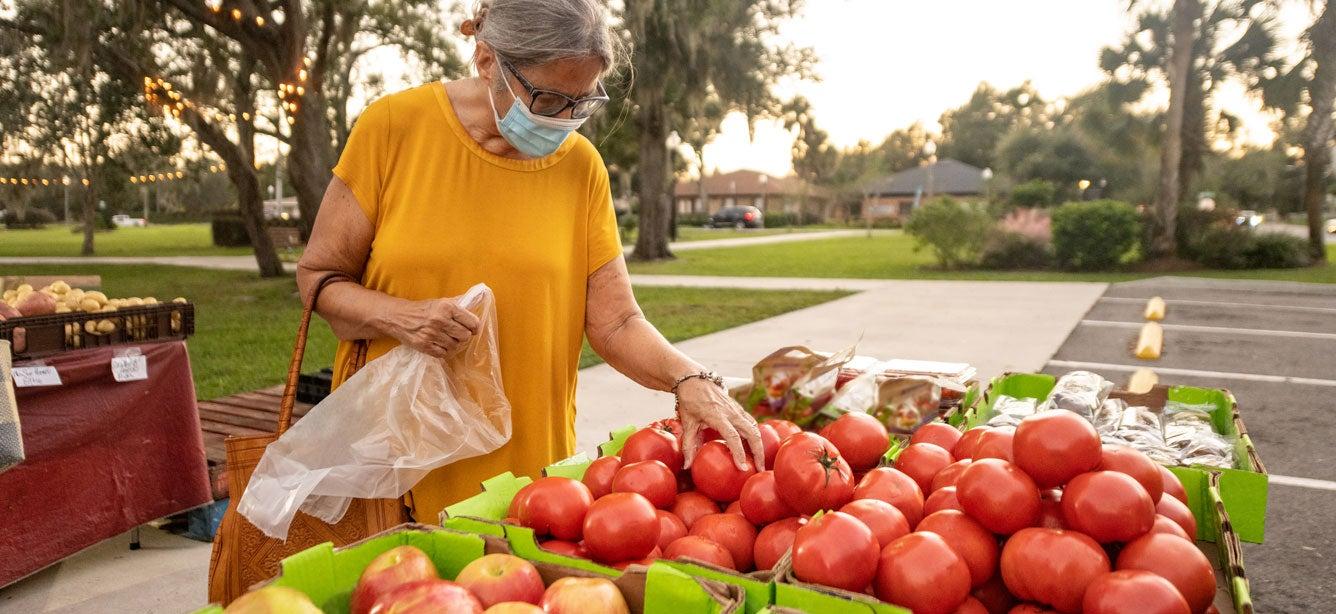
Related Topics
Are you an older adult worried about putting meals on the table day-to-day? Is your household income too high to qualify for the Supplemental Nutrition Assistance Program (SNAP, formerly known as food stamps) or other food assistance that could help you afford your groceries?
“Unfortunately, this isn’t an uncommon challenge,” says Jen Teague, NCOA Associate Director for Health Coverage and Benefits. “Which is not to say it’s any less distressing for those who face it."
In addition to ongoing anxiety over having enough to eat, older adults whose monthly budgets fall short of meeting their basic needs are forced to make impossible spending choices that can severely impact their health and quality of life.”
According to Feeding America, nearly half of seniors who faced food insecurity in 2021 (the most recent year for which data is available) had incomes above the federal poverty line.1 This means that of 5.5 million food-insecure older adults, close to 2 million still struggled to eat—even though they had higher relative incomes.
“When the latest data are released, we expect to see increased rates of food insecurity among older Americans across the board,” Teague said.
Even if you do receive SNAP benefits or other federally funded food assistance, you may still need a little extra help from time to time. And that’s where The Emergency Food Assistance Program (TEFAP) comes in.
What is the Emergency Food Assistance Program (TEFAP)?
The Emergency Food Assistance Program, or TEFAP, is a federal food assistance program that provides vital resources to food banks, food pantries, soup kitchens, and other community-based partners who feed people in need, including older adults.
First authorized in 1981, TEFAP’s original purpose was twofold: to support agricultural markets and assist low-income people by distributing surplus food from the government stockpile to hungry Americans.2
While the program has evolved in the decades since, its goals remain the same. Every five years, Congress authorizes TEFAP funding through the Farm Bill. The USDA then uses these funds to buy healthy food from farmers, growers, and producers and distribute it to emergency feeding organizations throughout the country. In fiscal year 2022, TEFAP enabled $399 million in food purchases across the nation.3
How does TEFAP work?
In partnership with state distributing agencies (such as agencies of education, departments of agriculture, health and human services agencies, and others), the USDA makes available the food it buys—and some administrative funding, too—to local organizations that serve hungry people at no cost.
People can access TEFAP benefits in two ways: By visiting a food bank or food pantry, or by eating a meal at soup kitchen, community center, or other congregate setting.
Is TEFAP the same as SNAP?
No. Although you may have heard people refer to TEFAP as “emergency food stamps,” there are some important differences. You’ll read more about these below.
One thing to keep in mind: Unlike most other food assistance programs including SNAP, you don’t receive—and won’t need—electronic benefit transfer (EBT) cards, farmers market vouchers, or other forms of payment for TEFAP. If you qualify, you can shop at your local food pantry or dine at a community kitchen at no cost without having to exchange anything.
What are the TEFAP income guidelines?
Each state sets its own eligibility criteria. Sometimes, these depend upon how you plan to access TEFAP benefits.
Generally speaking, the burden of proof is low.
For example, if you’d like to shop at a local pantry for food to take home, verifying your income eligibility simply could mean signing a self-declaration form, or showing that you already are enrolled in another federal, state, or local income-based benefits program. On the other hand, if you’d like to have a meal at a soup kitchen, you likely could do it without providing any proof of income whatsoever. Why? Because these locations have demonstrated that they mostly serve low-income clients.5
Do I need to apply for TEFAP?
It depends. There’s no standard TEFAP application form—but because individual states set their own eligibility standards, you may need to meet certain criteria or complete certain steps in order to benefit from the program. It’s best to contact your state distributing agency for the most recent guidance in your area.
What types of foods can I get through the Emergency Food Assistance Program?
Subject to availability, food banks may order a broad variety of items within the following six categories through TEFAP:
- Dairy
- Fruits
- Grains
- Oils
- Proteins
- Vegetables
The USDA arranges these selections according to current dietary guidelines to help food banks identify, order, and stock well-balanced food choices.
Together, these foods can help supplement the diets of low-income Americans at no cost, just when they need it most.
How can I learn more about food assistance programs for seniors?
Check out our article 6 Benefits That Could Help Older Adults Pay For Food. You can also use BenefitsCheckup.org to browse benefits programs available in your area and even get help applying. These programs can help you save money on food, utility bills, property taxes, health care, and more—so it’s worth seeing what you may qualify for!
Sources
1. Feeding America. The State of Senior Hunger in 2021. April 26, 2023. Found on the internet athttps://www.feedingamerica.org/research/state-senior-hunger
2. USDA. TEFAP Program Fact Sheet. Found on the internet at https://fns-prod.azureedge.net/sites/default/files/resource-files/tefap-program-fact-sheet-2019_1.6.20.pdf
3. Feeding America. Our Lawmakers Must Invest in TEFAP. Found on the internet at https://www.feedingamerica.org/take-action/advocate/the-emergency-food-assistance-program
4. USDA. TEFAP Program Fact Sheet. Found on the internet at https://fns-prod.azureedge.net/sites/default/files/resource-files/tefap-program-fact-sheet-2019_1.6.20.pdf



